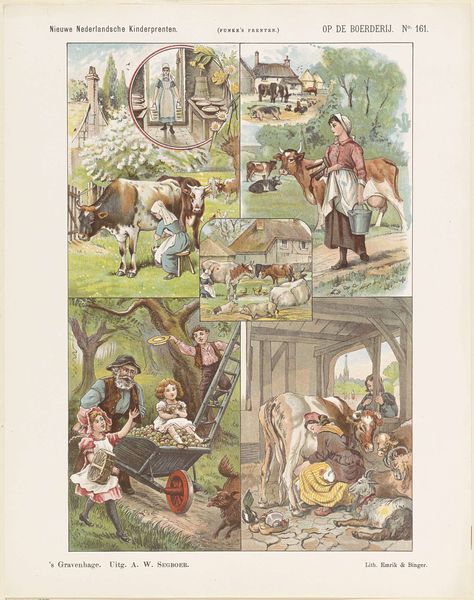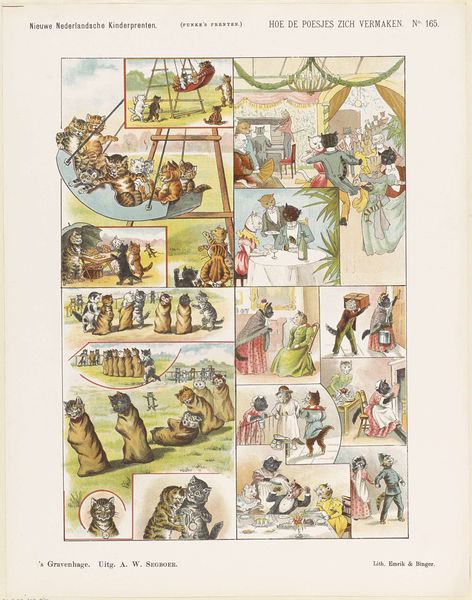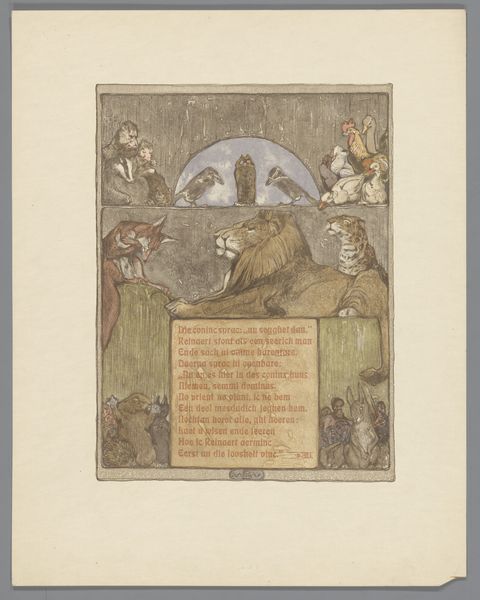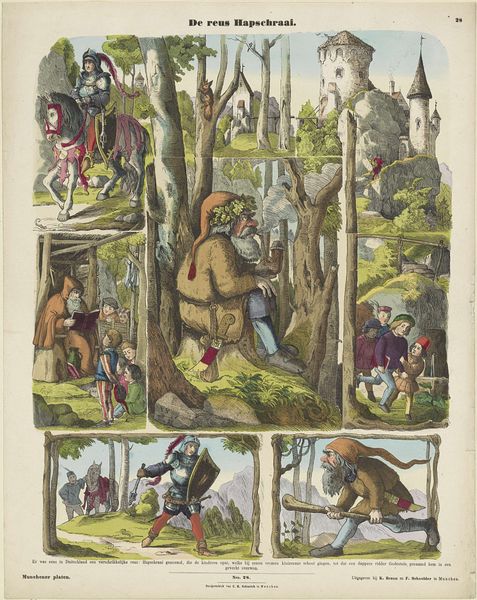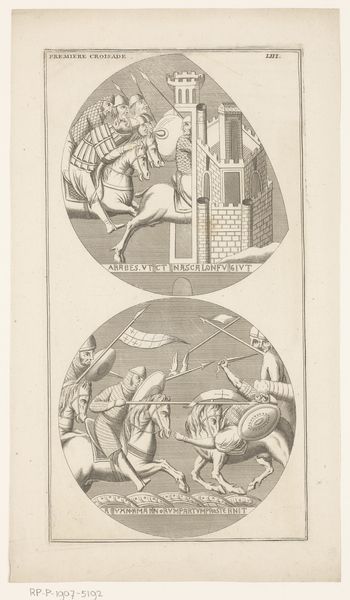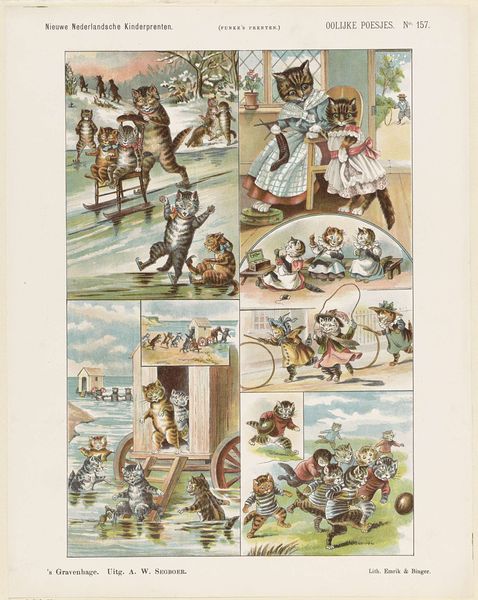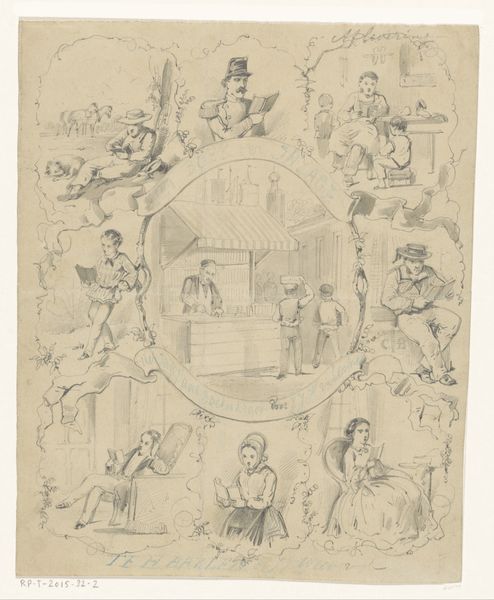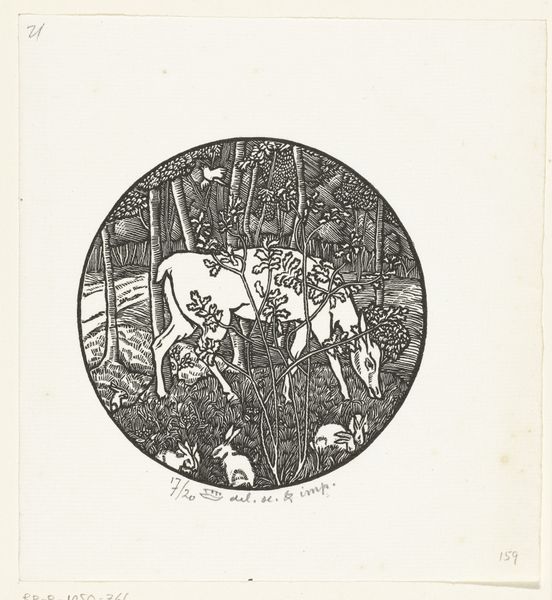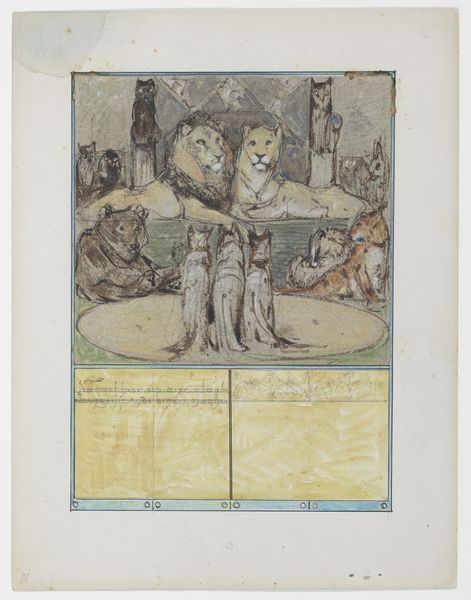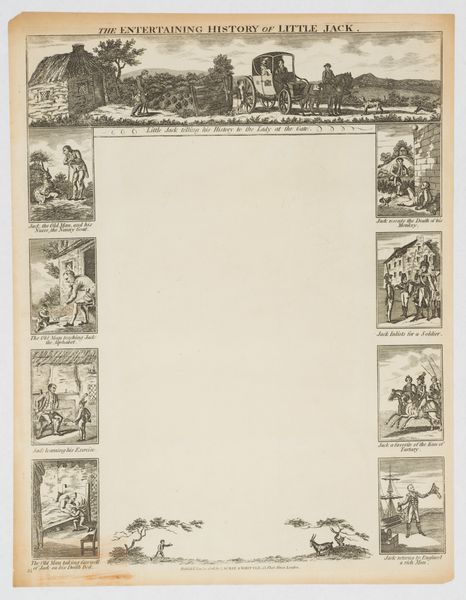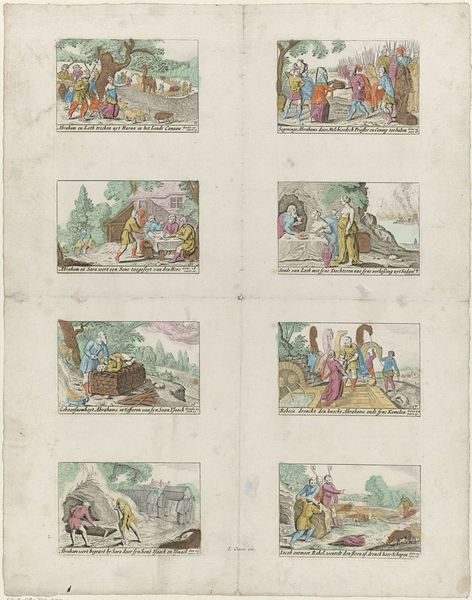
Wensbrief met een verhaal over een prins en een prinses 1851 - 1914
0:00
0:00
#
imaginative character sketch
#
aged paper
#
toned paper
#
sketch book
#
personal sketchbook
#
sketchbook drawing
#
watercolour illustration
#
storyboard and sketchbook work
#
cartoon carciture
#
sketchbook art
Dimensions: height 418 mm, width 341 mm
Copyright: Rijks Museum: Open Domain
Curator: Immediately, I notice this sense of fractured narrative, like looking at different scenes from a play. Editor: Indeed. What you're observing is a work titled "Wensbrief met een verhaal over een prins en een prinses," which roughly translates to "Wish Letter with a Story About a Prince and a Princess" by Constantius Wilhelmus Johannes Baesjou, created sometime between 1851 and 1914. It presents scenes evoking a royal story on aged paper. Curator: Aged, absolutely. And the technique… almost a storyboard feel? It really disrupts the typical idealized romance we're sold; it lays bare different facets and angles, presenting the narrative of class relations like components in a bigger, very gendered, machine. Editor: That's a fascinating reading. From a materialist lens, one could say the paper itself, toned by age, adds layers to the story, turning a simple illustration into something far more complex through the consumption of time and circumstance. Curator: Time certainly gives depth to narratives about gendered expectations, allowing for their dissection, highlighting imbalances inherent in many tales of romance and power. This is more than just princesses; this critiques the industry *of* princesses! Editor: The execution feels somewhat utilitarian, though, doesn't it? This doesn't come across as traditionally fine art, but perhaps something more closely connected to popular prints and other forms of reproductive imagery intended for mass consumption. It almost resembles a template or an initial rough sketch before larger scale, finer reproduction. Curator: Agreed, its function and intent matter hugely. How many of these royal narratives were produced for very public, commercial ends, and who benefitted from their proliferation? Where does our cultural capital flow to, and which stories are deemed valuable? Editor: Thinking about its social context, and who commissioned this – the intended purpose matters greatly here. Could this be an attempt to explore gender and societal relations through material culture? The production, distribution, and then the eventual discard of art... it has impact. Curator: Precisely. What stories persist, and for what reasons? This sketchbook drawing seems to open up avenues to explore narratives we both internalize and reject in our journeys. Editor: An interesting exploration. The materiality invites questions on class, accessibility and consumer culture while giving pause about who exactly tells these stories.
Comments
No comments
Be the first to comment and join the conversation on the ultimate creative platform.
